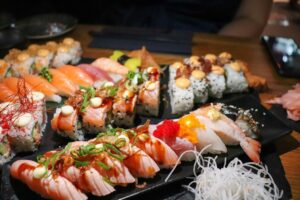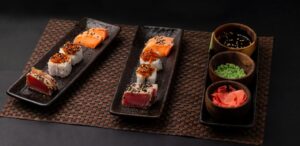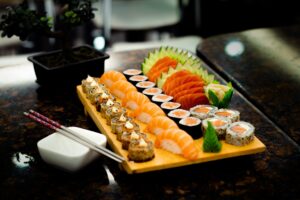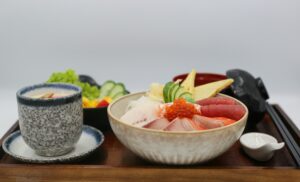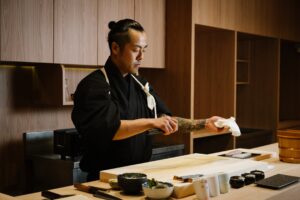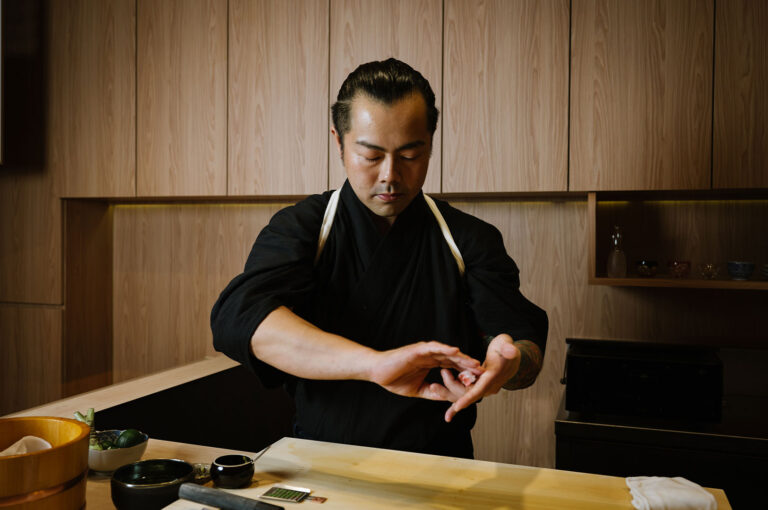
Best Food in Singapore: A Japanese Chef’s Guide to the Lion City’s Culinary Paradise
Singapore stands as one of the world’s greatest food destinations, where every meal tells a story of cultural fusion and culinary excellence. The best Singapore restaurants range from iconic hawker stalls to award-winning fine dining establishments, offering a curated selection of must-try dishes for food enthusiasts. This vibrant city-state has earned its reputation as a food paradise through centuries of immigration, trade, and cultural exchange that have created a unique gastronomic landscape unlike anywhere else on Earth. No visit is complete without trying the Singapore Sling, the iconic local cocktail that originated at Raffles Hotel and remains a must-try experience for visitors.
From bustling hawker centres serving authentic street food to Michelin-starred establishments pushing culinary boundaries, Singapore’s best food represents a harmonious blend of tradition and innovation that continues to evolve while honoring its multicultural roots. Signature foods such as chili crab and Hainanese chicken rice are famous dishes that define the local cuisine and are celebrated by both locals and tourists alike.
The city’s culinary scene thrives on the blend of tradition and innovation, with chefs reimagining beloved dishes that locals and visitors cherish, ensuring Singapore’s food culture remains dynamic and deeply rooted in affection for its iconic flavors.
Singapore’s Hawker Centres Heritage: The Soul of Local Cuisine
Singapore’s hawker centres function as the beating heart of the nation’s food culture, serving as community dining rooms where people from all walks of life gather to share meals and stories. These vibrant food courts represent much more than convenient dining venues—they embody the democratic spirit of Singapore’s food scene, where exceptional cuisine remains accessible to everyone regardless of background or budget.

The history of hawker culture traces back to the 1800s when Singapore emerged as a thriving port city attracting migrants from across Asia. Chinese laborers carried mobile kitchens balanced on bamboo poles, complete with ingredients and cooking equipment to serve hot meals on the go. Malay hawkers specialized in flame-grilled satay and fresh tropical fruits, while Indian vendors contributed colorful sweets, fragrant curries, and the beloved roti prata.
These early street vendors established the foundation of Singapore’s food culture that would eventually earn UNESCO recognition as an Intangible Cultural Heritage of Humanity in 2020.
The importance of hawker culture to daily life cannot be overstated, as these centres serve as Singapore’s community dining rooms where office workers grab quick breakfasts. A traditional Singaporean breakfast, featuring kaya toast and soft boiled eggs, is often enjoyed at a local coffee shop, pairing perfectly with a cup of kopi. Retired seniors enjoy leisurely bowls of noodles, neighbors catch up on gossip, and families collect their children’s favorite dishes. This social function transforms hawker centres into community hubs that weave Singapore’s multicultural fabric through shared meals.
Similar to Japanese street food culture, Singapore’s hawker scene values craftsmanship and technique, with stalls often specializing in one or two signature dishes refined over decades, requiring exceptional skill to execute properly. Among the many types of food available, rice cakes are a popular breakfast item, often served with chilli sauce. Carrot cake, known locally as chai tow kway, is also a staple hawker dish. Reflecting the city’s diverse and high-quality food scene, Singapore is home to many great restaurants ranging from humble hawker stalls to acclaimed dining venues, all contributing to the rich tapestry of Singapore’s best food.

A Global Dialogue: Japanese Precision Meets Singaporean Heritage
This deep-seated cultural value of craftsmanship and technique creates a powerful dialogue between Singapore’s hawker heritage and the disciplined world of Japanese cuisine. Sushi Masa by Ki-Setsu‘s culinary team deeply appreciates this parallel, finding a clear connection between the shokunin (master artisan) philosophy—the relentless pursuit of perfection—and the hawker’s dedication to their signature dish.
Both traditions prioritize freshness, quality, and precise technique, whether that involves the delicate cut of nigiri or the decades-honed wok control required for perfect Char Kway Teow. Dishes like Char Kway Teow are stir fried using flat rice noodles, dark soy sauce, and Chinese sausage, showcasing technical skill in achieving smoky, savory flavors, while other local noodle dishes use egg noodles or rice noodles to create distinct textures and authentic tastes.
This cross-cultural respect translates into an approach where traditional Japanese techniques meet global culinary curiosity. The omakase experience honors its principles—guided by seasonal ingredients flown in daily from Japan—but the menu is elevated by a philosophy that tradition should inspire, not limit. This thoughtful blend is not fusion, but a creative exploration where classic Japanese methods embrace modern artistry. Chef Masa’s global exposure and unique pairings (like uni with salt and lime or seared otoro with wasabi skin) reflect a desire to resonate with Singapore’s sophisticated, multicultural palate.
Ultimately, the restaurant views Singapore’s food culture as a model of harmony and high standards. Its emphasis on communal, high-quality dining—from the humble hawker stall to the finest establishment—aligns perfectly with the essence of Japanese dining values. By seamlessly combining innovation with tradition, the omakase chef contributes to Singapore’s rich tapestry of great food, allowing guests to experience the city’s vibrant culinary soul through the lens of Japanese precision and artistry.
Peranakan Food: Singapore’s Unique Cultural Fusion
Peranakan food represents one of Singapore’s most sophisticated fusion cuisines, emerging from the cultural marriage between Chinese immigrants and local Malay communities that created entirely new culinary traditions. This Straits Chinese or Nyonya cooking demonstrates how cultural exchange produces flavors and techniques that belong to neither parent tradition while incorporating elements from both.
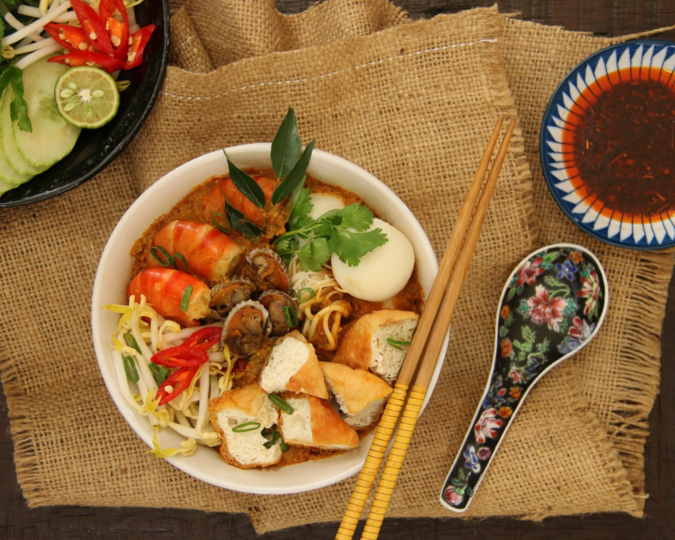
The history of Peranakan cuisine traces back several centuries when Chinese traders settled in the Malay Peninsula and married local women, creating a distinct culture that expressed itself through language, dress, customs, and particularly food. The resulting cuisine combines Chinese ingredients and techniques with Malay spices and cooking methods, producing complex flavor profiles that require sophisticated understanding of both traditions.
Key ingredients include galangal, tamarind, coconut milk, and belacan (fermented shrimp paste), as well as palm sugar and glutinous rice, which are important components in Peranakan desserts and snacks. These ingredients create the distinctive flavor profiles that characterize the cuisine—rich, complex, and often requiring hours of preparation to achieve proper development of spice pastes and slow-cooked preparations.
The complex flavor profiles achieved in Peranakan cuisine require understanding of how different spices interact during cooking processes. Spice pastes must be prepared properly and cooked to specific stages where aromatic compounds develop properly. Coconut milk must be added at correct temperatures and timing to prevent curdling while achieving proper richness. These technical requirements demand skill levels comparable to fine dining preparation. Dishes such as tofu stuffed specialties, like claypot yong tau foo, showcase the fusion of Chinese and Malay culinary techniques, further highlighting the unique character of Peranakan cuisine.
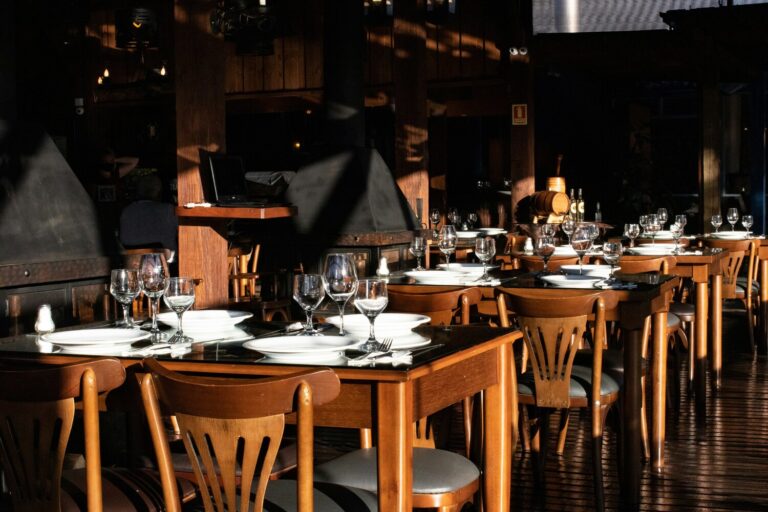
Hainanese Chicken Rice, Premium Dining and International Influences
Singapore’s Michelin-starred food scene demonstrates how the city-state has evolved beyond its hawker origins to embrace fine dining that rivals any global destination. The island now hosts numerous restaurants with Michelin recognition, showcasing both innovative interpretations of local flavors and exceptional international cuisines that reflect Singapore’s cosmopolitan character. In many premium establishments, traditional dishes such as beef rendang are reimagined with modern techniques and presentations, offering diners a sophisticated take on this iconic Southeast Asian favorite.
Many of Singapore’s top restaurants feature a dedicated wine bar or a curated wine list, enhancing the dining experience with expertly paired wines that complement the cuisine. Alongside these international selections, guests can also enjoy local beverage options such as sweet milk tea—served hot or iced, and often celebrated for its frothy, sweet character—as well as specialty coffees made with robusta beans, which deliver the bold, caramelized flavors distinctive to Singaporean kopi.
The development of Singapore’s premium dining scene builds upon the sophisticated palates developed through constant exposure to diverse, high-quality hawker food. Diners choosing upscale establishments expect experiences that justify premium pricing through exceptional ingredients, skilled preparation, innovative presentations, and service quality that hawker centres cannot provide.
Japanese restaurants and sushi culture have found particular success in Singapore, where appreciation for fresh ingredients, technical precision, and attention to detail aligns perfectly with local food values. The city’s position as a global hub ensures access to premium ingredients from Japan and other international markets, enabling restaurants to achieve authenticity while adapting to local preferences.
Sushi Masa exemplifies how premium Japanese dining can thrive within Singapore’s diverse culinary landscape. The restaurant’s commitment to traditional techniques, seasonal ingredients, and omakase experiences resonates with Singapore diners who appreciate craftsmanship and are willing to invest in exceptional dining experiences. The precision required for excellent sushi preparation parallels the technical skill valued throughout Singapore’s food culture.
Food Districts and Where to Experience Singapore’s Best: Maxwell Food Centre
Singapore’s food districts offer distinct experiences that showcase different aspects of the nation’s culinary diversity, from traditional hawker centres that preserve authentic preparation methods to modern dining areas that feature international cuisines and innovative fusion concepts.
Chinatown Complex stands as one of Singapore’s largest and most diverse hawker centres, housing numerous food stalls under one roof that represent the multicultural character defining Singapore’s food culture. Many of the dishes found in Singapore’s food districts, including those at Chinatown Complex, are also popular throughout Southeast Asia, reflecting the region’s shared culinary heritage.

The hawker centre format provides an ideal introduction to Singapore’s street food scene, offering variety that allows diners to sample multiple dishes during single visits. Popular stalls within Chinatown Complex include traditional Hainanese chicken rice vendors, char kway teow specialists, and various noodle shops that demonstrate the technical skill required for seemingly simple preparations. You’ll also find dishes featuring minced pork and pork belly as popular ingredients in noodle and rice dishes. Staple offerings such as fish balls, fish cake, and yong tau foo are widely available, with fish paste used as a key ingredient in some stuffed dishes.
Maxwell Food Centre represents another essential destination for food lovers, particularly those seeking tourist-friendly access to famous hawker stalls. The centre’s convenient location near the central business district and its concentration of well-known vendors make it an ideal starting point for exploring Singapore’s best food. Don’t miss the nasi lemak, served with fragrant coconut rice, crispy fried chicken, and fried anchovies, often accompanied by spicy sauce and chili sauce for an extra kick.
Little India and Arab Street provide authentic ethnic cuisine experiences that showcase how different communities have preserved their culinary traditions while adapting to Singapore’s multicultural environment. These districts offer specialized ingredients, traditional preparation methods, and authentic flavors that might be difficult to find elsewhere. Many dishes here feature basmati rice as a key ingredient, adding to the distinctive taste and aroma. The concentration of community-specific restaurants and shops creates immersive cultural experiences that extend beyond just dining.
Orchard Road represents Singapore’s modern dining and international options, featuring shopping center food courts, casual dining chains, and upscale restaurants that cater to diverse tastes and budgets. This area demonstrates how Singapore accommodates both traditional and contemporary dining preferences within the same geographic space. Food courts here often serve a range of local specialties, including oyster omelette with fresh bean sprouts, fried tofu, and carrot cake cooked with pork lard for extra flavor. For dessert, shaved ice is a popular choice, offering a refreshing end to your meal.
The Marina Bay area showcases Singapore’s fine dining scene against the backdrop of the city’s iconic skyline. Premium restaurants in this district often combine exceptional cuisine with spectacular views, creating dining experiences that justify special occasion pricing while demonstrating how Singapore restaurants compete internationally for culinary excellence.
Each district offers different advantages for exploring Singapore’s food scene. Hawker centres provide authentic, affordable access to traditional preparations alongside opportunities for cultural immersion. Here, you can enjoy a delicious bowl of curry fish balls or noodle soups, savoring the incredibly tasty and savory flavors that make these dishes stand out. Local favorites include bak kut teh (meat bone tea), a hearty soup made with pork bones, and specialties like oyster omelette, yong tau foo, and carrot cake. The best hawker stalls are renowned for their thick sauce, rich flavors, and reputation among both locals and tourists.
Modern dining areas offer comfort, convenience, and international options for those seeking familiar flavors. Fine dining districts provide opportunities to experience innovative cuisine and exceptional service quality. Seafood lovers should try the iconic chilli crab, famous for its spicy chili sauce and thick sauce that coat the succulent crab, making it a must-try street food.
A Sushi Chef’s Perspective on Singapore’s Food Culture
From the perspective of Sushi Masa’s culinary team, Singapore’s food culture offers fascinating parallels and contrasts to Japanese culinary traditions that create opportunities for mutual appreciation and learning. The shared values of freshness, quality, and technique that define both cuisines provide common ground for understanding despite significant differences in flavor profiles and preparation methods.
Singapore’s food scene inspires creativity at Sushi Masa through exposure to techniques, ingredients, and flavor combinations that can inform innovative approaches to Japanese cuisine. The city’s openness to culinary experimentation, combined with sophisticated palates developed through exposure to diverse high-quality cuisines, creates an environment where thoughtful innovation receives appreciation.
The precision and attention to detail valued throughout Singapore’s food culture, from hawker stalls to fine dining establishments, aligns perfectly with Japanese culinary values. This shared appreciation for excellence creates opportunities for Sushi Masa to contribute to Singapore’s dining scene while learning from its remarkable diversity and quality.
We invite you to experience both Singapore’s incredible local flavors and the Japanese precision we bring to our craft at https://kisetsu.com.sg/. Just as Singapore’s food culture demonstrates how different traditions can enhance each other through respectful interaction, our omakase experiences combine traditional Japanese techniques with an understanding of the sophisticated palates that Singapore’s food culture has developed.

